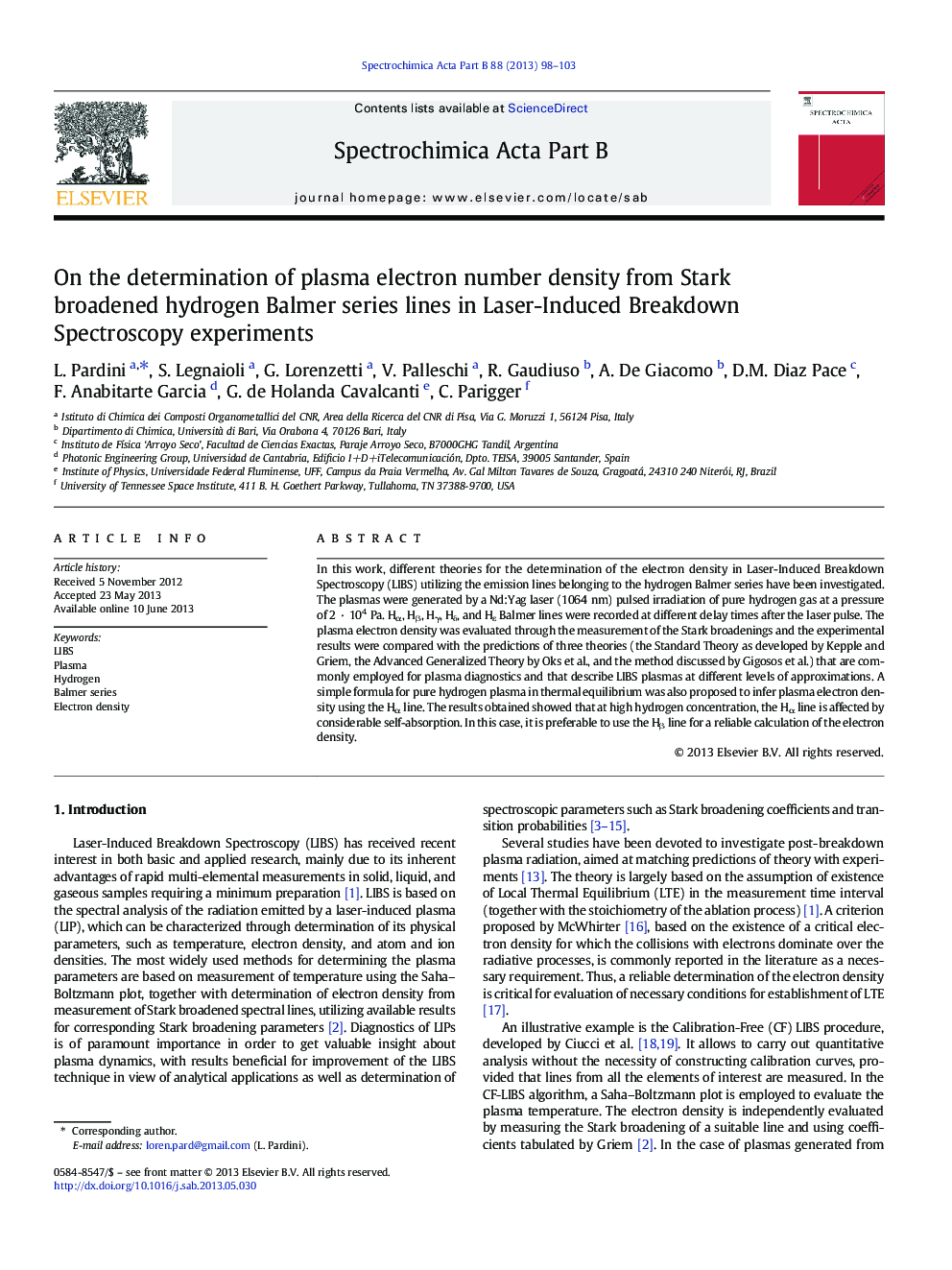| Article ID | Journal | Published Year | Pages | File Type |
|---|---|---|---|---|
| 7674857 | Spectrochimica Acta Part B: Atomic Spectroscopy | 2013 | 6 Pages |
Abstract
In this work, different theories for the determination of the electron density in Laser-Induced Breakdown Spectroscopy (LIBS) utilizing the emission lines belonging to the hydrogen Balmer series have been investigated. The plasmas were generated by a Nd:Yag laser (1064 nm) pulsed irradiation of pure hydrogen gas at a pressure of 2 · 104 Pa. Hα, Îβ, Îγ, Îδ, and Hε Balmer lines were recorded at different delay times after the laser pulse. The plasma electron density was evaluated through the measurement of the Stark broadenings and the experimental results were compared with the predictions of three theories (the Standard Theory as developed by Kepple and Griem, the Advanced Generalized Theory by Oks et al., and the method discussed by Gigosos et al.) that are commonly employed for plasma diagnostics and that describe LIBS plasmas at different levels of approximations. A simple formula for pure hydrogen plasma in thermal equilibrium was also proposed to infer plasma electron density using the Hα line. The results obtained showed that at high hydrogen concentration, the Hα line is affected by considerable self-absorption. In this case, it is preferable to use the Hβ line for a reliable calculation of the electron density.
Keywords
Related Topics
Physical Sciences and Engineering
Chemistry
Analytical Chemistry
Authors
L. Pardini, S. Legnaioli, G. Lorenzetti, V. Palleschi, R. Gaudiuso, A. De Giacomo, D.M. Diaz Pace, F. Anabitarte Garcia, G. de Holanda Cavalcanti, C. Parigger,
